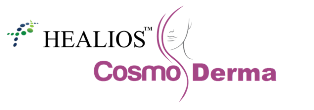What is eflornithine?
Eflornithine administered by injection is used to treat African sleeping sickness, a disease caused by protozoa (tiny one-celled animals). However, eflornithine hydrochloride applied topically as a cream is the first agent known to help slow the rate of excessive hair growth. It is marketed under the brand name Vaniqa® and comes as eflornithine hydrochloride 13.9% cream. It is available on prescription from a doctor in the United States and elsewhere.
How does eflornithine work?
Eflornithine works by blocking the enzyme ornithine decarboxylase (ODC) that stimulates hair growth. Eflornithine HCl cream 13.9% has been shown to slow the rate of hair growth in animal and human studies. Studies with eflornithine cream have been limited to treating unwanted hair on the face, around the lips and chin.
What is eflornithine used for?
Eflornithine HCl cream is indicated for the reduction of unwanted facial hair in women. Over 20 million American women in the United States have excessive facial hair caused by the following factors:
- Genetic – hirsutism or hypertrichosis
- Menopause and the normal aging process
- Medical condition such as androgen excess disorder and polycystic ovarian syndrome
- Medications
Women with excessive facial hair often experience low self-esteem and embarrassment. Eflornithine HCl cream slows the rate of hairgrowth and is often used in combination with other hair removal techniques to maintain a hair-free complexion.
How effective is eflornithine?
In two double-blind placebo controlled trials, 35% of patients treated with eflornithine cream show significant improvement after 24 weeks of treatment compared with 9% of patients treated with placebo. Differences between the treatment and placebo groups could be seen as early on as 4 weeks after starting treatment in some patients, whilst in other patients, differences were not apparent until after 8 weeks of treatment. It appears that the longer eflornithine is used, the better it works.
Over time the need for additional hair removal techniques to maintain a hair-free complexion may reduce. However, the treatment is not effective for everyone.
How to use eflornithine HCl cream
- A thin layer of eflornithine HCl cream should be massaged well into the affected area of your face twice a day.
- Wait at least 4 hours before washing your face again.
- Cosmetics and sunscreens can be applied over the top of eflornithine HCl cream once it has been absorbed into the skin and dried.
- If using in conjunction with other hair removal techniques, eflornithine HCl cream should be applied at least 5 minutes after performing the first technique.
- If you stop using eflornithine HCl cream for an extended period of time, hair will begin growing back at the same rate that it used to.
Side effects of eflornithine
Eflornithine HCl cream is very well tolerated. Some women may experience minor and temporary skin irritations including:
- redness
- stinging
- burning
- tingling
- rash
- ingrown hairs (pseudofolliculitis barbae)
- acne
If skin irritation develops, the dose may be reduced to once a day. If irritation continues you should stop using the cream.

 7975288129 / 7483528607
7975288129 / 7483528607
